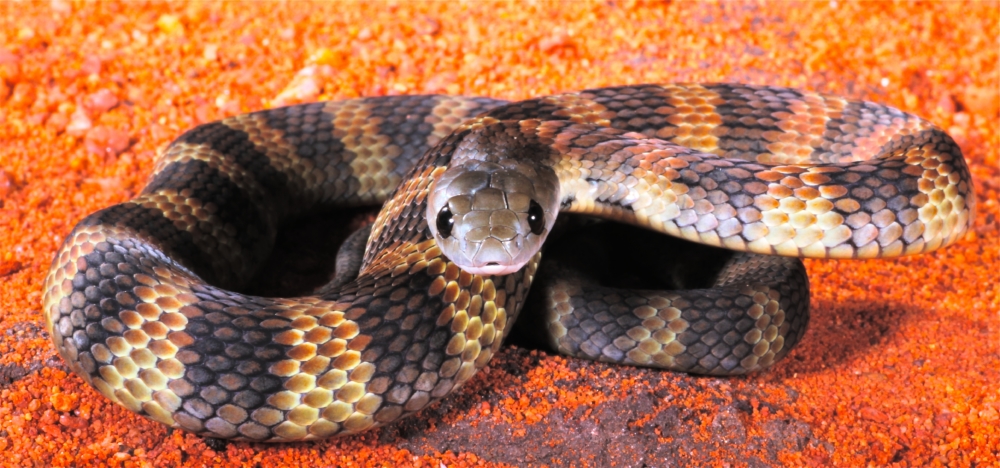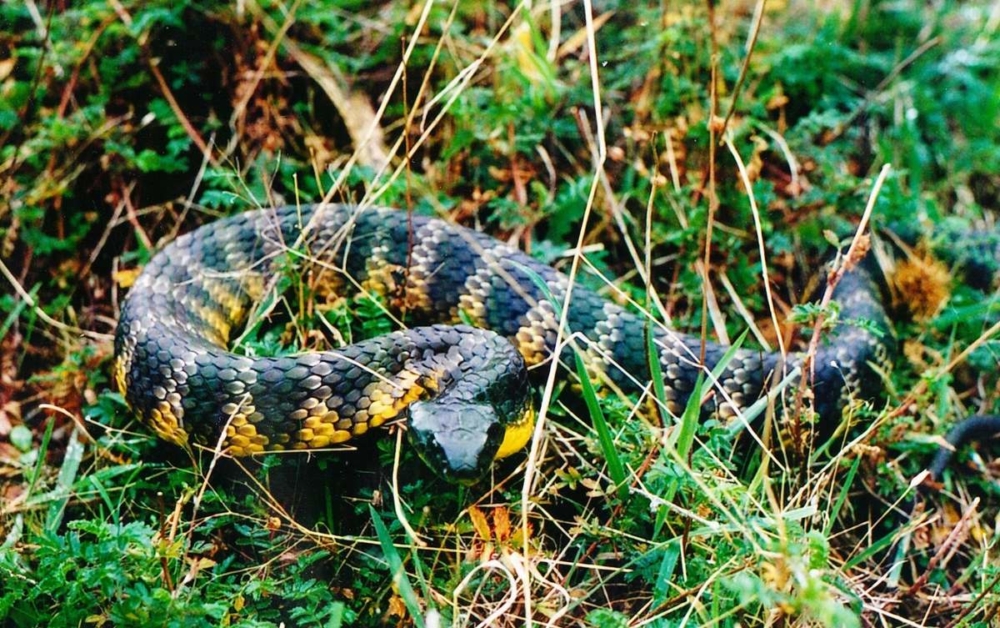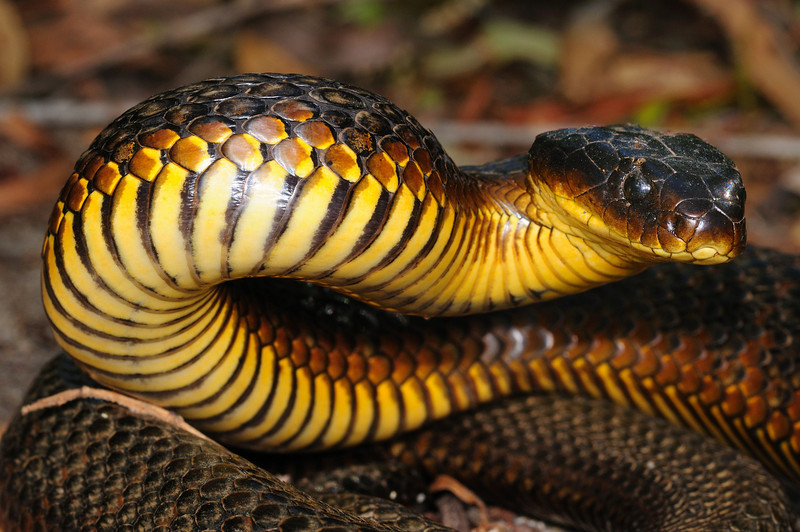The tiger snake is an incredibly beautiful and elegant predator. It got its name because of the tiger-like color, which ranges from gray-olive to red. But despite all the external attractiveness, this creation can be extremely dangerous. A meeting with him can end in death for both other animals and humans.
Material Content:
Features and habitat
Tiger snakes are relatively small compared to their relatives, one might say of medium size. Usually they grow to 1-1.5 meters in length, but larger two-meter individuals are also found. Their belly always has yellow pigmentation. It can be either a bright sunny shade or a dirty swamp color. The whole creeping body is covered with round scales, which serve as a kind of protective shell for it.
The habitat of tiger snakes is not as wide as that of other species. Although they feel comfortable both in the forest or in the meadow, and in the pasture or in the desert. A tiger snake lives on islands such as New Guinea and Tasmania. But it is in Australia that their largest number is concentrated. These places are natural for these creatures and are their natural homeland.
Character and lifestyle
This representative of the Aspid family has a calm disposition, but you should not try your luck. Slow and inactive snake, at first glance, it may seem lazy and harmless. However, such conclusions will be erroneous. Sensing the slightest danger, the predator immediately attacks the prey and kills it with its powerful poison.
Snakes are inherently inactive creatures. They spend almost all day in thickets and shelters.Only hunger, which they do not often wake up, can make them go out. They have a daily lifestyle and are located near water bodies. People often meet them near rivers, streams and swamps. Hunting this creeping helps a successful coloring, which becomes a real camouflage for them. The creepy creature has a good reaction, hearing and vision, but it will not attack a person for no reason. In natural conditions, snakes live less than 10 years, and in artificial ones - up to 15.
Australian Tiger Snake Venom
The description of the species of tiger snake always includes information about their most dangerous poison. This is a real quick-acting neurotoxin that instantly acts on the nervous system. In order to kill the enemy, one bite is enough for this predator. The amount of poison of one individual is enough to destroy 400 people. During contact with the surface of the skin, the snake strains the glands and injects the toxin itself through the grooves in the teeth.
It causes irreparable harm to health in a matter of seconds, namely:
- provokes a violation of the respiratory system;
- leads to paralysis;
- stops the heart.
Locals claim that this snake is rarely the first to sneak into homes and attack a person. The reason was her cowardice or caution - one can only guess.
Striped predator feeding
Tiger snakes spend a lot of time in dense thickets and on trees, where they can hunt. They attack sharply, leaving the victim no chance of salvation. Their diet preferably includes lizards, frogs, small reptiles, birds, mice, amphibians, large insects. Sometimes a predator can eat eggs of foot and mouth disease and birds.
The prey that the snake has caught can be swallowed whole, since it does not have anatomically defined teeth for chewing. The process of digesting food for these creeping is quite long. Full assimilation can occur in one to two weeks. Only then can the animal feel hunger and go hunting again.
Breeding
In a tiger snake, as a representative of the reptile class, puberty occurs at the age of 1.5-2 years (the same for females and males). The mating season in these animals begins in the spring. The pairing process of two individuals is quite long and can last longer than 1 hour. After 1 week, the female shows the first signs of pregnancy.
This animal belongs to the ovoviviparous reptiles, which means that the eggs remain in the enlarged area of the oviduct until hatching. In addition, tiger snakes are very fertile: for one litter, a female is able to bring 70-72 cubs to the light. But not everyone succeeds in surviving. No more than 30 immature snakes are able to get along in one nest. Mother for some time takes care of their safety and nutrition. Young snakes, in turn, are active during the day. They crawl out onto trees and bushes, but not higher than 1 meter.
Tiger snake at home
The most poisonous snake because of its incredible color has won the hearts of many breeders. They create comfortable home characteristics for them. As a rule, the terrarium becomes the place of residence of the predator, in which the following conditions must be met:
- Temperature 20˚-26˚C in the daytime.
- Temperature 8˚C at night.
- The size of the can of the terrarium should be no less than 60x30x40 centimeters.
- Humidity is about 70%.
In addition, for each individual there should be a separate shelter with low light. By the way, for light, it is best to use lamps with a UV spectrum. The presence of a pond is very important for snakes, so you can put a container of water to them. At home, it is most convenient to feed tiger snakes with small mice, but it is not recommended to give them directly from your hands: this is a great danger to humans.
Interesting Facts
To get to know such controversial creatures as tiger snakes better, it is worth exploring interesting facts about them:
- The coloring of the tiger snake directly depends on its habitat.
- In cold winter time, the activity of the snake decreases, and she prefers to sit in secluded places.
- The natural enemies of tiger snakes are larger snakes, birds of prey and humans.
- Fights can occur between males during the mating season. They are entwined with bodies and try to bite each other with powerful jaws.
Despite the danger of tiger snakes, they do not enter into conflict without a clear threat. Therefore, in order to preserve this unique type of animal, it is worth abandoning all kinds of accessories made of genuine snake skin.

















